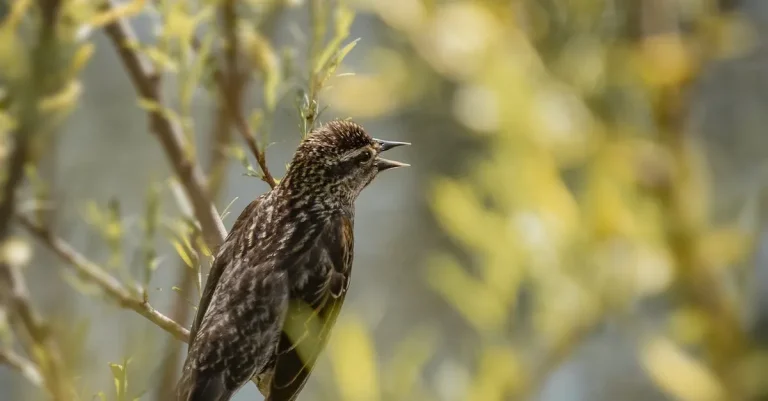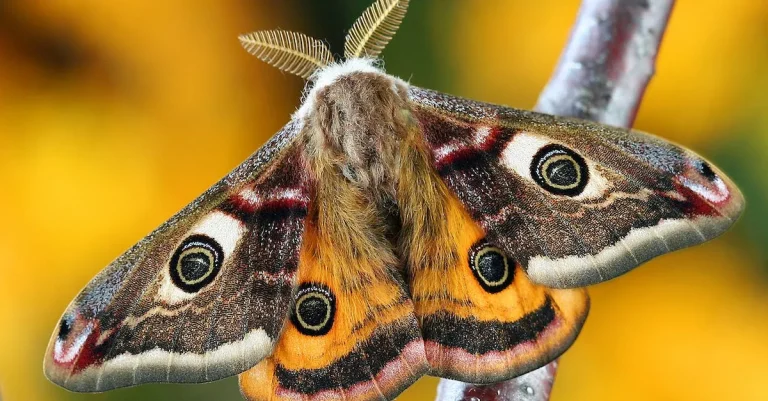With their delicate blue petals and charming appearance, forget-me-not flowers have captivated people for centuries. If you’ve found yourself curious about the deeper meaning behind these tiny blossoms, you’ve come to the right place.
In short: Forget-me-nots represent true, enduring love and memories. Their name itself implores us to remember them and what they stand for.
In this comprehensive guide, we’ll unpack the potent symbolism and spiritual significance behind the modest forget-me-not. Read on to learn about their meaning in various faiths and cultures, ties to history and myth, and how to harness their magic in your own life.
The Origins and Meaning Behind the Forget-Me-Not Flower Name
The traditional story of how they got their name
The most well-known legend about how the delicate forget-me-not got its memorable name is the story of a medieval knight and his lady fair. As the tale goes, the knight picked beautiful blue flowers by the river for his lover, but as he leaned down to gather them, the weight of his armor caused him to lose his balance and plunge into the coursing waters.
As he sank beneath the surface, he threw the bouquet of blossoms toward his beloved and implored her to “Forget me not!”
Other legends around the forget-me-not name meaning
There are other mythical origins of the flower’s distinctive moniker as well. In Germany, legend says that God named the flower after a request from Adam and Eve as they were expelled from Eden, so they’d have a memento of paradise.
Still other stories say that after God flooded the Earth, a single blue flower remained to remind Noah not to forget humanity’s mistakes.
The intrinsic meaning and significance of their name
The lovely little blossoms have certainly lived up to their memorable name over time. Representing enduring love, connections that last beyond death, or the danger of forgetting people and events that are precious, the intrinsic meaning behind “forget-me-not” makes them a powerful symbol of memory, remembrance, and the bonds of affection.
With their distinctive title and promise to remember love and loss, it’s no wonder the vibrant blooms have been commemorated in art and poetry for ages.
Forget-Me-Not Meaning in Mythology and Folklore
Greek mythology linking forget-me-nots to true love
According to a touching Greek legend, a lover named Eros hoped to win the affection of a nymph named Chloris by gifting her beautiful flowers. Chloris was charmed by the gesture, and she transformed all the flowers into the delicate forget-me-not.
The story speaks to the forget-me-not’s meaning as a symbol of lasting love and faithfulness. As the myth goes, Chloris said to Eros: “I will never forget you as long as I live, and these flowers will always bear the reminder.”
Ever since, the vibrant blue blossoms have represented steadfast love that withstands the test of time.
European folktales about the flower’s early roots
Sweet folktales from Switzerland, Germany, and Scandinavia attempt to explain the early origins of the delicate forget-me-not in Europe.
A German legend claims the forget-me-not sprang from the final resting place of a squad of brave soldiers ambushed by enemies. Another folk story says God named the flower “vergissmeinnicht” to reward a German knight for rescuing a drowning baby.
Meanwhile, a Scandinavian folktale whimsically recounts how the forget-me-not’s little blue star-shaped flowers got their name. As the story goes, a flower fairy knelt down next to a stream to drink and glimpsed her beautiful reflection–but forgot it as soon as she stood up. “Forget-me-not!”
the fairy cried out. And thus the lovely streamside blossom was christened.
Forget-me-nots in children’s stories and literature
The delicate forget-me-not has captured writers’ imaginations through the ages. Since medieval times, it has appeared in children’s fables, poems, and fairy tales.
In 1822, the blossom emerged as a key symbol in Frederica Bremer’s The Magic Goblet, a romantic fairytale depicting a girl’s search for the mythical site that gives the flower perpetual life. True love, of course, proves the real “magic goblet” keeping the forget-me-not alive.
The iconic 1928 novel Anne of Green Gables weaves forget-me-nots into an emotional scene where Anne Shirley revisits an old homestead. Seeing forget-me-nots thriving in her abandoned garden, Anne realizes time did not forgot her–just as the blossoms signify.
And in Frances Hodgson Burnett’s 1911 classic The Secret Garden, a forget-me-not’s message weaves meaningfully through the story. When Mary Lennox finds the garden, she discovers a single “lonesome” forget-me-not blooming hopefully despite neglect and darkness–foreshadowing the gardens, and human hearts, she will revive.
The Cultural and Religious Symbolism of Forget-Me-Nots
Their significance in Christianity and the Bible
In Christian symbolism, the delicate forget-me-not flower represents God’s constant love and faithfulness. The bright blue color is associated with faith and trust in the biblical promise that God will “never forget” his people (Isaiah 49:15-16).
Legend says the flowers sprung up from the ground where Jesus’ blood dropped as he was nailed to the cross, forever reminding us of his sacrifice. Forget-me-nots feature in religious artwork depicting the crucifixion and in architectures of old European churches and cathedrals.
Importance among Hindus, Buddhists and in Eastern religions
In Hinduism and Buddhism, blue forget-me-nots represent wisdom, enlightenment, and self-realization. It’s believed the vibrant blue petals open people’s “third eye chakra” to receive sacred knowledge and truths of the universe.
The flowers frequently decorate shrines and meditation spaces to focus the mind. Forget-me-not garlands are sometimes used in Hindu wedding ceremonies to signify the soul’s eternal union, much like the western concept of “soulmates”.
Chinese legends tell of a beautiful mountain nymph named Ma Ti Xie who eternally waits under the tall Tien Mu mountains for her warrior lover Wang Yuan. Blue forget-me-nots are believed to have sprouted in the mountains from Ma Ti Xie’s tears as she waits.
The flowers represent patience, optimism against adversity, and enduring love.
Forget-me-not motifs in Judaism and Islam
In Hebrew legends, God created and named every wild flower on earth as a gift to mankind, except for the small but vibrant forget-me-not. After naming the last one, God realized he had forgotten this tiny blue flower. “Forget me not!”
the delicate flower pleaded, and so God christened it “forget-me-not” as a reminder of how every small creation is precious and has a purpose, no matter how forgettable it may first appear. Rabbis and Jewish artists later adopted the forget-me-not image in menorahs, clothing motifs and on gravestones as a symbol to honor the victims who perished during the Holocaust, so their memory may live on.
Though forget-me-nots traditionally aren’t common symbols in Islam, some Muslim poets and writers have referenced the modest little flowers in religious texts about life’s brevity and how one must appreciate each fleeting moment before it slips away like a forget-me-not petal in the wind.
They remind us not to take our loved ones for granted inshallah, as we may forget to value them when they are gone.
The Historical Legacy and Meaning of Forget-Me-Nots
Use as a poignant emblem in WWI
Forget-me-nots took on special meaning during World War I, when they were used as a symbol of remembrance. According to legends, soldiers picked these delicate blooms from the battlefields and gave them to their loved ones with the poignant request: “Forget me not.”
The flowers came to represent the tremendous loss of life during WWI and the hope that the fallen would be remembered.
Other major historical events tying into their symbolism
Beyond WWI, forget-me-nots have been present at many momentous occasions in history that relate to their symbolic meanings of devotion, hope, and remembrance:
- In 15th century Germany, it’s said that a knight picked forget-me-nots for his lady love from the side of a river, but their weight pulled him in fully armored, leading to his demise. His last words to her were “forget me not!”
- Horticultural legends state that Henry IV, King of England in the 15th century, adopted the flower as a symbol of loyalty and decided to wear them as his motto: “Souveraine des eaux, je n’oublierai jamais Henri IV” (“Sovereign of the waters, I shall never forget Henry IV”).
Clearly, forget-me-nots have long captured the human spirit and imagination with their delicate beauty and poignant symbolism.
How Henry IV adopted them as a motto
As mentioned, 15th century English King Henry IV encountered the petite forget-me-not and was captivated. According to legends, he saw the flowers growing in abundance along the rivers where he enjoyed fishing. Henry IV decided to take their symbolic meaning personally by adopting them as his motto.
Some also believe there was a political motivation, as Henry IV had taken the throne from Richard II in battle and wanted to establish legitimacy and loyalty. The forget-me-nots represented his wish that his subjects would remain faithful to him and not “forget” him as their sovereign.
So this early English king essentially branded himself with the iconic flower, further intertwining royal history with the meaningful symbolism of the blossoms. His successors like Henry VI later utilized forget-me-nots similarly to encourage loyalty among nobles and commoners alike.
Common Symbolic Meanings and Messages of Forget-Me-Nots
True, enduring love and fidelity
Forget-me-nots have long been associated with true, faithful, enduring romantic love. Their small, delicate flowers were thought to resemble the eyes of lovers looking longingly into each other’s eyes.
According to a German legend, a knight and his lady were walking along the riverside when he picked these flowers for her. As he leaned down to reach them, he fell into the river. As he was drowning, he threw the flowers to his beloved and shouted “Vergiss mein nicht!” meaning “Forget me not!”
Thus, the flower serves as a touching reminder to never forget true love.
Beyond romantic love, forget-me-nots also symbolize any deep, loyal affection – for a family member, dear friend, or cherished pet. Their message calls us to value these connections, nurture them, and keep alive the memory of loved ones even when they are no longer physically present.
Memories, remembrance and commemoration
With their poignant legend, forget-me-nots have become a symbol commemorating departed loved ones. They are often used in funeral flowers and memory gardens for those we wish to remember. Their message speaks to grieving hearts, tenderly asking us not to let go of precious memories.
During World War I, forget-me-nots were worn to honor those who fought and died, especially by those back home who vowed not to forget their sacrifice. This tradition carries on today, as these flowers are used symbolically on Remembrance and Memorial Days.
Beyond death, forget-me-nots also simply remind us to hold on to meaningful memories – of childhood, milestone events, momentous accomplishments, happy times. Their nostalgic meaning calls us to commemorate and carry these recollections with us, even as we move forward into new seasons of life.
Hope and optimism for the future
Though linked to remembrance of the past, the forget-me-not also turns our eyes expectantly towards the future. Their messages speak of hope, optimism, and confidence that precious memories and loves endure, walking with us into each new day.
In a 1924 poll, forget-me-nots were chosen as the state flower of Alaska, symbolizing hope for the new territory’s future statehood and prosperity. After enduring long, dark winters, the sight of their first spring blooms fueled optimism for brighter days ahead.
So while commemorating our past, the forget-me-not flower lifts our spirits with dreams of renewed life, love, and possibility stretching out before us. They remind us spring always returns, and with it, hope.
How to Use Forget-Me-Nots for Their Magical Properties
Growing them to attract true love into your life
Forget-me-nots have long been associated with romance and love magic. According to folklore, if you plant forget-me-nots in your garden or in pots near your front door, it can help attract a soulmate or strengthen the love in your current relationship.
The vibrant blue color of the blooms is thought to symbolize faithful, eternal love.
To harness the romantic power of forget-me-nots, plant the seeds or starter plants in well-drained, partially sunny spots in early spring after the last frost. Water them regularly and add a thin layer of compost each season to nourish the soil.
As the cheery flowers blossom in summer, spend time nurturing the plants while visualizing yourself joyfully falling in love. You can also gift a forget-me-not plant or bouquet to a romantic interest to convey affection.
Gifting forget-me-nots to convey romantic interest
Since medieval times, people have exchanged pots and bouquets of forget-me-not flowers as tokens of admiration and blossoming romance. Their message is clear – “don’t forget me” or “remember me always.” According to folk magic, when you present these blooms to someone you care for deeply, the recipient is sure to carry fond feelings and beautiful memories of you in their heart.
For the best results, choose vibrant, healthy forget-me-not plants or cut flowers bursting with electric blue petals. Arrange them appealingly in a pot or bouquet, then gift them unexpectedly to spark delight. As you offer them, express your warm sentiments so your feelings shine through.
This symbolic act strengthens attachment and affection between giver and receiver.
Drying them for memory magic and sachets
You can conveniently preserve forget-me-not’s legendary power by air-drying the flowers to carry their magic with you or work into spells. To dry them, cut fresh blooms on a dry morning and gather them into small bundles secured with rubber bands.
Hang them upside down in a warm, dark, dry area for 1-2 weeks until thoroughly dried.
The dried electric blue blossoms retain their symbolic ability to strengthen bonds, sharpen memory, and keep fond recollections alive. Carry a few in a pouch or add them to memory jars or crafts. You can also layer the dried flowers into sachets or charm bags along with rose petals, lavender, and lemon verbena.
Tuck these romantic, memory-enhancing herbal bags into drawers, closets, handbags, or anywhere you wish to cultivate remembrance and love magic.
Conclusion
With their rich history, cultural importance, and intrinsic symbolism, it’s clear why forget-me-nots have remained so popular across languages and lands over time. Whether you’re hoping to attract an enduring romance, commemorate a memory, or infuse some magic into your life, these tiny blue blossoms pack an outsized punch.
We hope this guide has illuminated the potent symbolism and spiritual meaning behind the modest forget-me-not. May it inspire you to see forget-me-nots as more than just a pretty flower, but as a vessel channeling love and remembrance through the ages.






